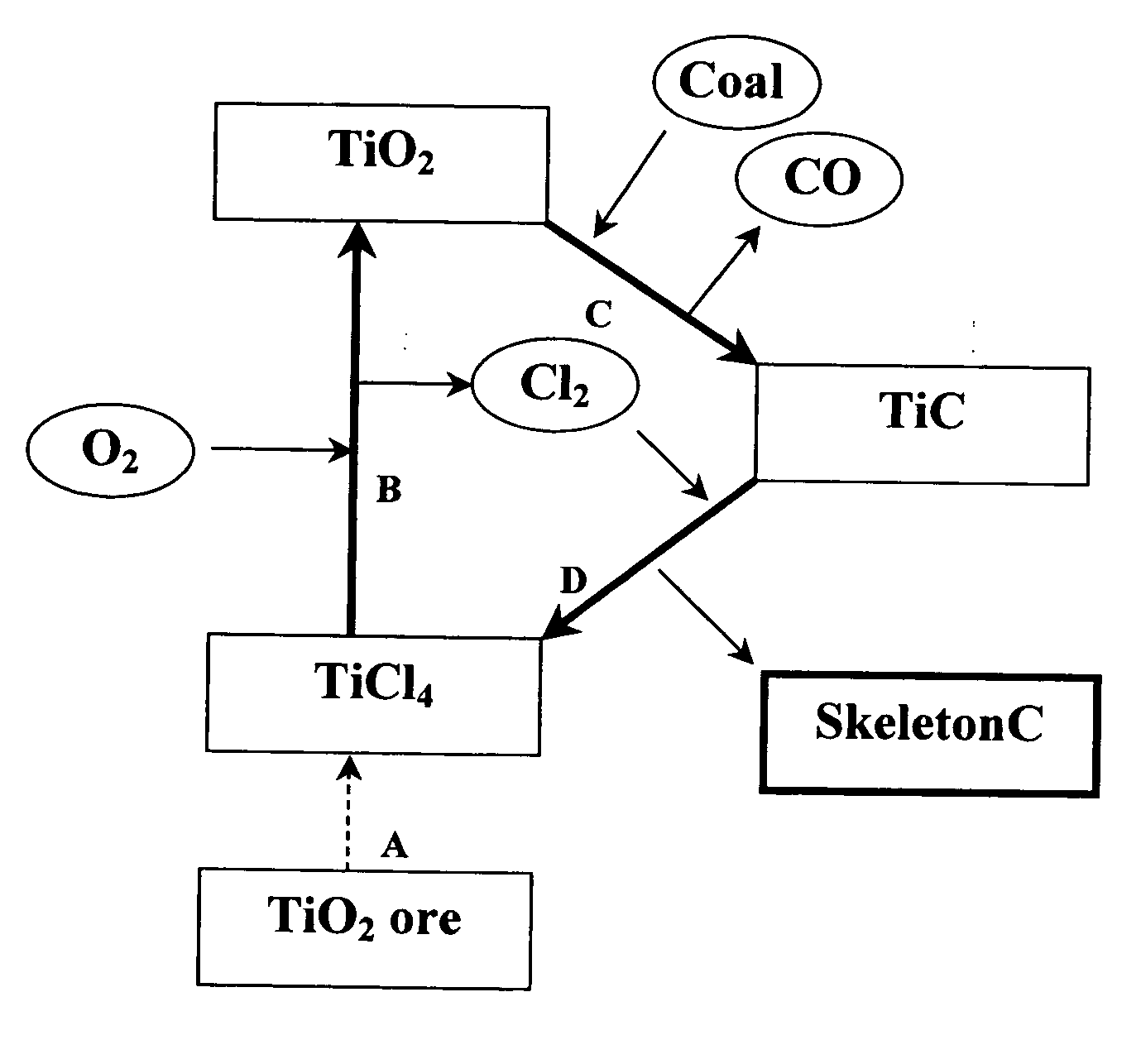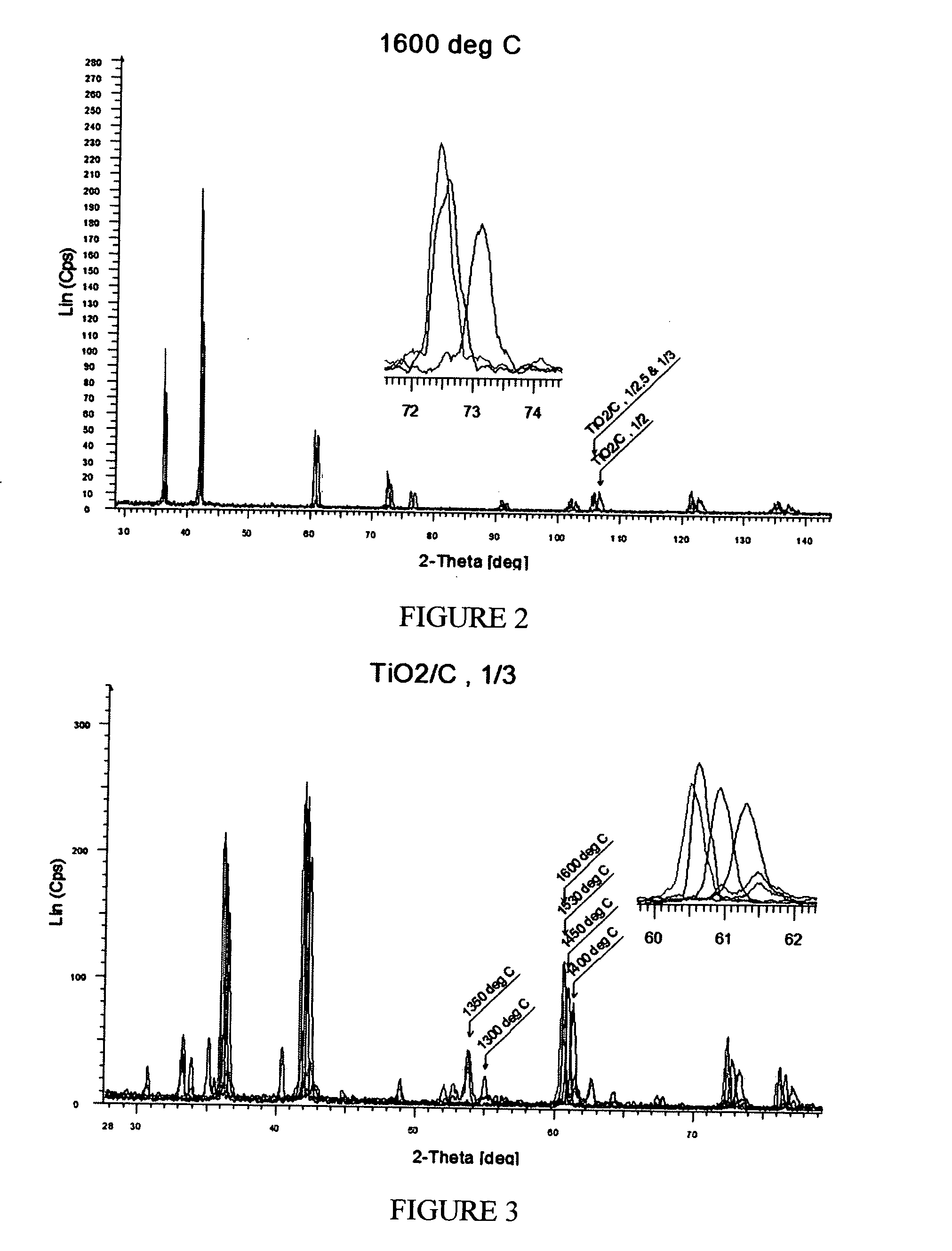Method for manufacturing the nanoporous skeletonC material
a nanoporous carbon and skeleton technology, applied in the field of nanoporous carbon materials, can solve the problems of relatively high manufacturing cost of carbide-derived carbon and substantial dependence on the availability and quality of precursor carbide, and achieve the effect of reducing waste-consumption
- Summary
- Abstract
- Description
- Claims
- Application Information
AI Technical Summary
Benefits of technology
Problems solved by technology
Method used
Image
Examples
example 1
[0055] 66.8 g of TiO2 (Alfa Aesar, ؘ1 μm) and 33.2 g of carbon powder (Alfa Aesar, ؘ0.04 μm, SBET 62 m2g−1) are weighed leading to a mixture with a mole ratio of 1:3.3 and placed in a ball mill container with some milling media. The amount of milling media added is kept to a minimum since the goal is to dry mix the precursors and avoid the milling effect, which could affect the precontrolled particle size distribution of the precursor chemicals. The mill is run for 30 min on medium speed to create a uniform dry mixture of carbon and TiO2. After that the milling media is separated and the mixture is transferred into the wet mixing container.
[0056] 500 ml of chemical grade isopropanol is added to the dry mixture and gently stirred until viscous slurry is formed. After that the slurry is thoroughly stirred by means of an electric Laboratory Aid strirrer to ensure the best possible homogeneity of the mixture.
[0057] The homogenous wet mixture is transferred into a distillation flask ...
examples 2-6
Examples 2-6 are made by the same procedure as example 1 except the mole ratio of TiO2 / C was varied in range of 1:3 to 1:2 in accordance with data in Table 1.
examples 7-9
Examples 7-9 were made by the same procedure as described in examples 2-4 except the temperature of reactor was 1530° C. in accordance with data in Table 1.
PUM
| Property | Measurement | Unit |
|---|---|---|
| particle size | aaaaa | aaaaa |
| temperature | aaaaa | aaaaa |
| particle size | aaaaa | aaaaa |
Abstract
Description
Claims
Application Information
 Login to View More
Login to View More - R&D
- Intellectual Property
- Life Sciences
- Materials
- Tech Scout
- Unparalleled Data Quality
- Higher Quality Content
- 60% Fewer Hallucinations
Browse by: Latest US Patents, China's latest patents, Technical Efficacy Thesaurus, Application Domain, Technology Topic, Popular Technical Reports.
© 2025 PatSnap. All rights reserved.Legal|Privacy policy|Modern Slavery Act Transparency Statement|Sitemap|About US| Contact US: help@patsnap.com



